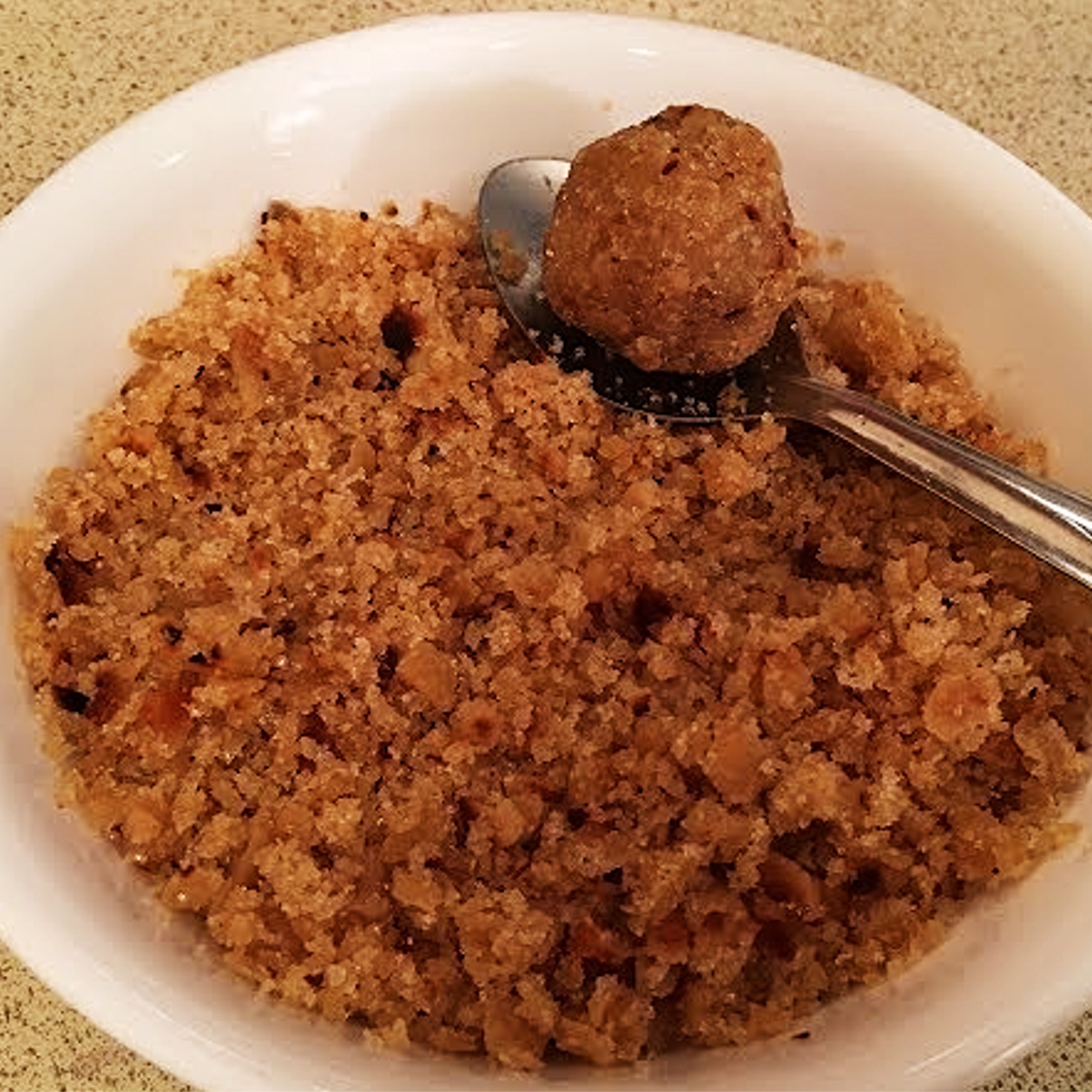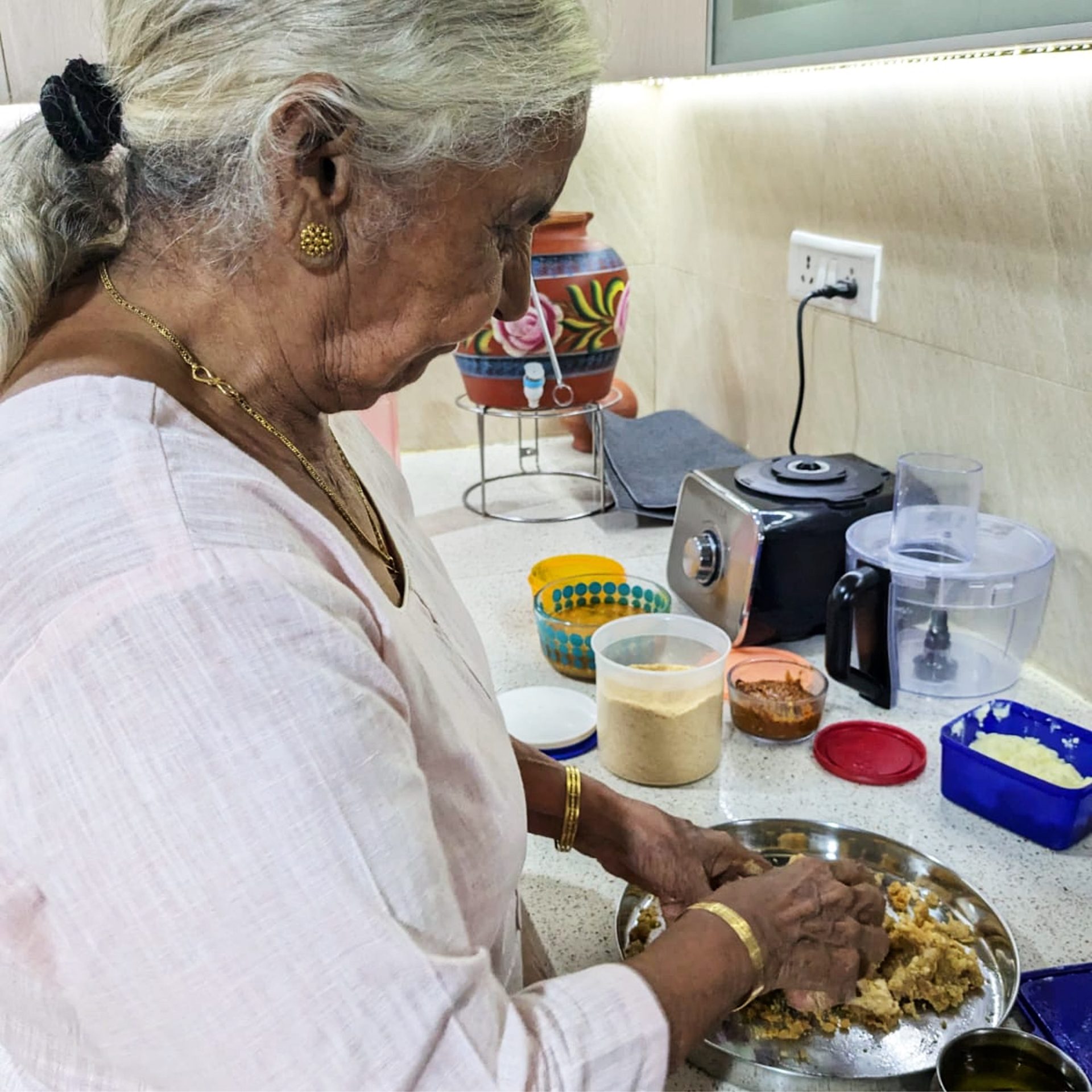In many agricultural communities in Haryana, churma has been a dietary staple, yet it remains less known than the Rajasthani dal baati churma which blends sweet and savory flavors. The churma I cherish consists of just three ingredients: crushed roti, sugar, and generous amounts of ghee. However, as families shift away from labor-intensive lifestyles, churma’s popularity has declined. It’s certainly not a calorie-friendly option, leading to its gradual disappearance alongside other high-fat, high-carb dishes.
As a 35-year-old woman transitioning from a Jat household to a Punjabi family after marriage, churma has become a rare treat for me. Growing up, I was a picky eater, often struggling to finish my roti and sabzi after school. My Dadi (grandmother) would come to my rescue with a delicious bowl of churma, but only after I ate a bowl of dahi. She believes churma is a symbol of health, much like halwa and kheer, staples of Haryanvi cuisine. While my taste for sweets has evolved, her fondness for traditional shaadi-waali mithai, like balushahi and shakkar pare, remains unchanged.

Recently, at a family wedding, I heard a Haryanvi folk song that brought back memories of churma. The song caught my attention as I was eating, when a group of elderly women began singing it casually—something that often happens at weddings. I hesitated to call them “elderly,” knowing it might annoy my grandmothers, who are in the video, but the truth is, it’s an old song, not as popular as the modern Haryanvi pop songs. Initially, I struggled to grasp every word, but once I did, I came to appreciate its softness and beauty. The song speaks of a newly married girl torn between her love for her family and her groom, and how churma plays a part in their journey back home.
The song’s narrative follows a groom who comes to fetch his newlywed wife but her family insists she stay longer. Upset, the groom leaves without eating. The wife argues with her parents and decides to follow him. After walking a few miles, she asks her husband for a balushahi. In frustration, he sarcastically retorts, “Why don’t you eat the churma your family gave you?” This highlights the absence of food for their journey, as she defied her parents’ wishes. Her regret isn’t just about the sweet; it’s about the conflict of love and loyalty many newly married women face.
Why did churma make an occurrence in the song? Churma is often prepared for festivals, requiring substantial ghee—something typically reserved for special occasions in large families. Although I can’t generalize, churma was usually accessible mainly to landed upper-caste families. Women would ration ghee, often saving it for visits from the son-in-law. The song is sung when a girl departs for her natal home, her family (read women) lovingly packing churma for the journey.
While we may not typically carry food for short or long trips today, access to food was limited in the past, especially in villages without shops or restaurants. Back then, journeys were more challenging, necessitating the carrying of food and water. Churma was favored for its transportability, requiring no side dishes and keeping the damand (son-in-law) in mind.
The lyrics of the song translate as follows:
Meri kaali chundri jor ki
Maine do rah pemak lagai
Mere balam aaye len ne,
Ghar k ne salah milai
(Please bring my bkack dupatta,
the one on which I have put ghotta (lace) two ways.
My beloved has come to fetch me,
the family has sat together to decide)
Meri ma ghalan naat gi
Usne ulti thaali sarkai
Mere balam chaale roos k
Meri kuch na paar basai
(My mother refused to let me go,
he [husband] has pushed the plate back
My beloved left disappointed,
my family did not think of me)
Piya seedhi sadak chaliye
Paache te main bhi aaye
Main kos chaali do chaar
Raste mein bhook lag aayi
(Beloved, please walk the straight road
I will join you in a while
I had walked only a few miles
I soon felt hungry)
Teri jeb mein rupaiyee saath
Lyaade na baalushaashi
Gori khale ne apna churma
Jo apne pihar the hai laayi
(I’ve seen you have sixty rupees (or maybe paisa) in your pocket
Why don’t you buy balushahi?
Dear, why don’t you have the churma
that you got from your home?)
Piya dobi tere pyaar ne
Oh ghar kya te roos k aayi
Piya kabz karega churma
Thandi se baalushahi
(Beloved, it was foolish of me to fall in your love
That I left my family
Beloved, churma causes constipation
better is balushahi)
Though this write-up is meant for a food magazine, I can’t resist discussing the song’s content and form. Hearing “balam” (lover) used to refer to a husband surprised me, as conjugal love was rarely expressed in the past. The wife’s request for her finest odhni,(dupatta or scarf) which she embroidered herself, illustrates the significance of her union. My Dadi remarked, “Oh, this generation wouldn’t know what ‘balam’ means,” yet I was struck by the affectionate terms present in a dialect that is not known for its softness. Times have changed; I freely express my love for my own balam, even in the presence of the older generation. This contrasts sharply with the past, where women in joint agricultural households faced strict purdah. Folk songs became an outlet for romance and grievances.
After marriage, I eagerly wanted my husband to try churma but I believe one needs a Haryanvi palate to truly appreciate it, especially when paired with curd to balance the sweetness. Although churma is slowly fading, it still makes occasional appearances. Recently, I encountered another version made with bajra roti and white butter, known as ‘churi,’ during a field trip to Mewat.
As I contemplated writing about churma, I initially thought it too ordinary a dish. I was unaware of its legacy—rich in carbohydrates and fats, churma was designed for energy for farm work. The skill lies in kneading the hot chapatis with ghee and shakkar, (sugar).The moment the roti comes off the flame, it must be crushed quickly, often burning the hands in the process. As a child, I would watch my Dadi’s face to gauge the heat, and we would relish the churma together as it cooled. At almost 86, she rarely enters the kitchen now, except for halwa, churma, or kheer.
Churma’s significance lay in having limited sweets, with chocolates allowed only occasionally. Times have changed; even chocolate no longer excites me due to its abundance. My palate has expanded to include dark chocolates, pancakes, and other treats, leaving little space for churma in my daily life. Yet, sometimes, it takes a song to remind us of our roots, prompting us to indulge in churma once in a while.
Halwa, kheer, balushahi are different types of desserts or sweet dishes.
Purdah (curtain) was a system in some Muslim and Hindu communities as a form of screening women from men.


Never viewed Churma with the same lens before!
This Haryanvi delicacy for one’s balma combines ingredients of tradition and emotion, creating a recipe that enfolds tender crumbs of affection, the gentle blending of hearts, and the sweet persistence of devotion.
Beautifully written!
Thank you!
Loved reading this. It’s all new to me 🙂
Thank you! There is so much to explore and learn about India’s rich and diverse culinaryscape.
You made me excited about “churma”
Would definitely try to find recipe on You tube and try to make it.
Go ahead and let us know your feedback. Happy cooking!
This is so well written, Anchal. The whole piece took me back to my village and my summer holidays, where my dadi always made churma for us. In my region (Palwal/Faridabad), we also call it Malida!”
That’s interesting. At times the same food is known by different names in different regions. Glad you liked the piece. Thank you!
Interesting read. Let’s see if the scene described in the song can be recreated next time you leave “pihar” to go along with “balam” and certainly would love to have churma anyday ! Simple yet unparalleled sweet dish no chocolates can match